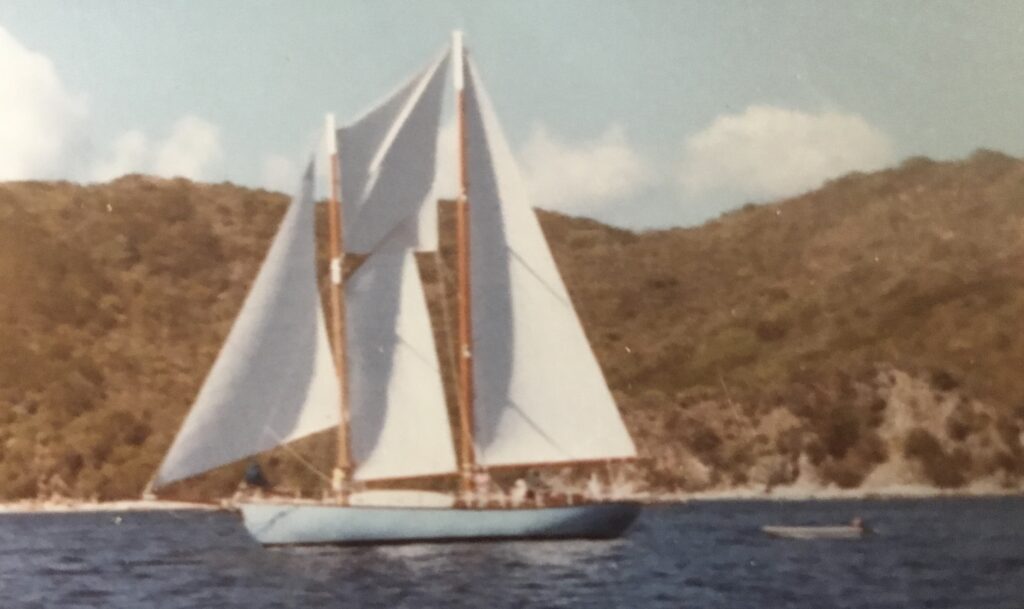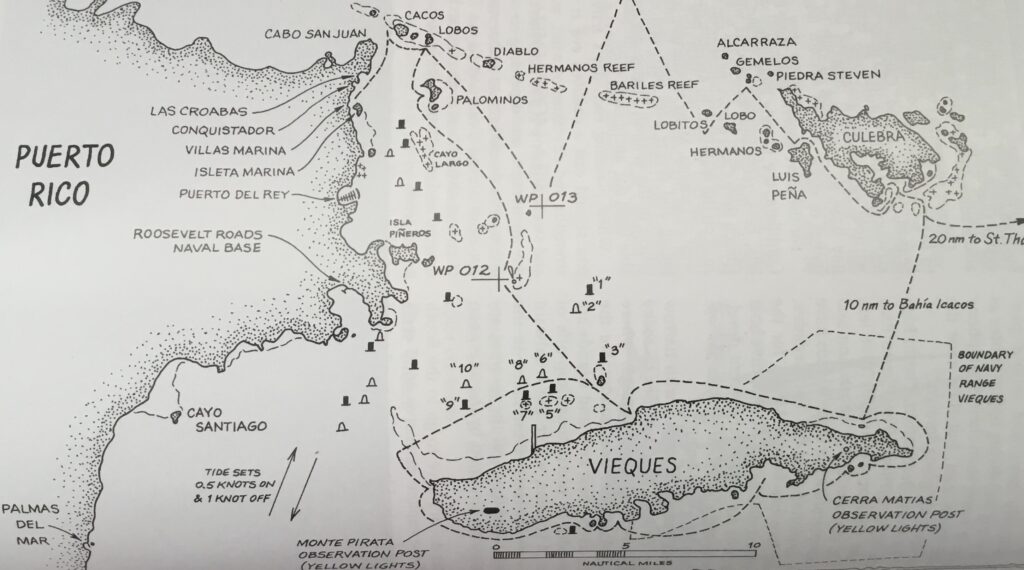Goodbye Road Town
On Friday 29th April Jon completed his last day at the Hood Sail Loft. He was having farewell drinks with the lads from the loft at The Moorings. I had been ashore with both boys at Village Cay Marina to do a load of laundry. We returned to the dinghy dock. Whilst I lowered the laundry into the dinghy, Oliver climbed out of his pushchair and started running off pushing the chair down the dock.
“Come here, you scallywag!” I yelled at him.
He looked over his shoulder giggling. And he carried on running like something from a cartoon, straight off the end of the pontoon still pushing the chair and went into the water with a big SPLASH!
Oliver disappeared under the water and bobbed back up to the surface, spluttering but still giggling. Leaving Jethro in charge of the dinghy painter, I dived in to retrieve him. Grabbing him with one arm I swam to the dinghy, heaving him into the bow seat and securing him in his harness. Next I had to swim down to get the pushchair. Bystanders looked on and clapped as I climbed back into the dinghy. Jethro started up the outboard and drove us back to Camelot at anchor. Oliver did not seem nearly as distressed as me. I rinsed the pushchair and both of us with the fresh water shower, then dressed us both in dry clothes.
The following day we went alongside to fill up our water tanks and end-for-end the anchor chain. The last fifteen fathoms of galvanised chain had become very worn from three years constant use and was causing twists, jumping over the gypsy roller on the electric winch. We adjusted the markings accordingly.
Motoring out of Road Harbour, we used our klaxon to say “goodbye” to friends on the way. We broad reached under full sail to West End and dropped anchor in Soper’s Hole at sunset. There was a farewell dinner on board Endeavour of Man with Mack and Mo. One of the characters she had been successful in getting off alcohol was Bomba from the famous bar Bombas Shack on Capoon Bay.

I used my scuba gear to scrub the hull before we departed the BVI on Saturday morning. According to our log, we had completed 2147 miles on board Camelot up to that point.
Leaving Tortola for the last time 1983
Goodbye West End
We cleared out of West End Customs and Immigration before reaching off between Little Thatch and St John’s. I took the boys to the beach in Cruz Bay whilst Jon went to clear into US territory. He bought a six month cruising permit which should have covered us for the USVI, the Spanish Virgins and Puerto Rico. By 5pm we were at anchor off the Submarine Base in St Thomas. All around was busy activity of sea planes, jets from the Harry S Truman airport, cruise liners and a Tropic Line crane offloading a container ship.
Oliver was excited at all these things to point out, shouting happily he pointed to a seaplane taking off,
“Airboat, airboat!” He was getting more accurate with his vowels.
The next morning I went ashore to do six weeks worth of victualling. Jon rigged Guinevere to sail the boys over to Honeymoon Bay for a few hours of beach and sailing. Dried goods and cans were much cheaper in the USVI and rum was only $1.37 per bottle!
Weighing anchor at 8.00 am the next morning we hoisted sail to reach into unknown waters for us on our journey westward. Through binoculars we identified the conning tower of a submarine off to starboard. In the little port of Dewey on Culebra we dropped anchor at lunchtime. We lowered the dinghy and went to clear in at the Customs Office.
“What firearms do you have on board?” They wanted to know.
No Guns?
”Nosotras no tenemos armas,” I explained.
Eyebrows shot up. “No guns?” They asked in disbelief.
We had many conversations with friends about carrying a gun onboard for protection. Neither Jon nor I had ever fired a gun and we concluded that to have a loaded gun on board would be more dangerous with two small children than the risk of being boarded and threatened. If you were not prepared to use it, accurately and with intent to hurt, we decided there was no point in having one.
We were allowed in and got clearance for our next destination on the east coast of Puerto Rico, which would be Palmas Del Mar. Throughout the Spanish speaking islands of this US territory we had to check in at every port. Our registration was now BVI. Non-US vessels with Aliens on board ( their alarming word for non Americans) must clear in and out at an official entry point.
The hot dusty town of Dewey was very different from anything we had seen so far.
Much less development had been carried out on this sleepy island. There were flocks of seabirds to be identified. We rowed the dinghy under a road bridge to have a look at the hurricane shelter of Ensenada Honda. We bought the boys elaborate ice creams. They both learned to say “Grassias,” and soon learned the words ‘helado’ and ‘por favor’ which would come in very useful. We looked longingly at the unspoilt beaches but needed to crack on.
The Spanish Virgin Islands

The US Navy used the area between Culebra and Vieques for war games. There was a huge Naval Base at Roosevelt Rhodes. We listened out on the VHF for any warnings to navigation and to the weather forecasts as we sailed across the north coast of Vieques. Navigation was complicated by the fact the some of the buoys marked on our chart were missing. This was to become a frequent problem. Either our information from second hand charts was not up to date or alternatively the buoys could have been destroyed in recent hurricanes.
Hello Puerto Rico
It was pleasant and interesting day sailing into the east Coast of Puerto Rico to Palmas Del Mar accompanied by a school of leaping dolphins. Jethro and Olly watched them from the deck clapping with delight. On the run Jon said,
“I need to put a boom vang on that main boom to stop the sail slatting.”
Once we had anchored close to a couple of boats we recognised from down island, he set about fixing that with rope and a pulley before we went ashore to clear in. We would be sailing downwind more and anything that made the rig safer would be wise.
The plan was to day sail along the South Coast of Puerto Rico rather than the much busier and more traditional northern coast. This would give us more chance to explore the less populated places on this huge island, and be more fun for the children. Then we would head up to the east coast of the island of Hispaniola before working up through the Bahamas. We had made a good start, but we had only covered 66 miles of this 2000 mile journey so far in six days.